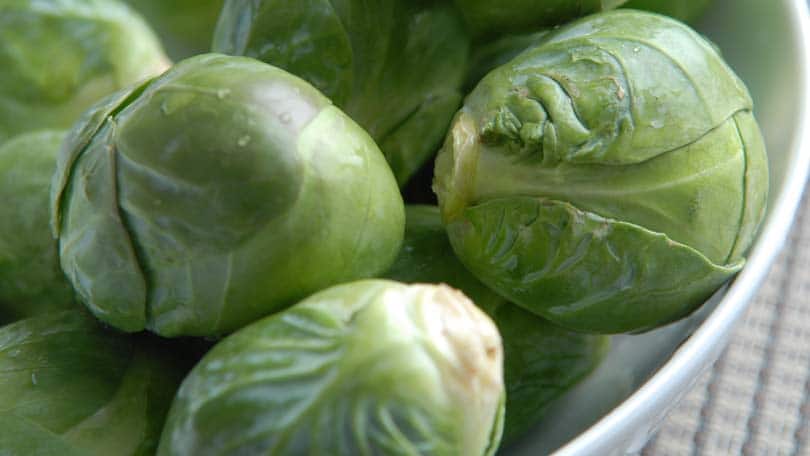
Brussels sprouts, also known as brussel sprouts, are those cute, little, green cabbages that make a great side dish, adding variety to any meal. Kids sometimes like them, or at least they’ll try them, because they are quite original when compared to other vegetables. They are a vegetable that is way underrated by many, probably because they weren’t cooked right when they tried them. They are really nutritious veggies, are extremely delicious and notorious for gourmet dishes.
Characteristics of Brussels Sprouts
Brussels sprouts are members of the cabbage family. In appearance, they look a lot like a miniature version of a cabbage, but they are way different by taste. The taste of cabbage is kind of bland, while Brussels sprouts have a delicate, distinct flavor. The tang becomes milder when the crop is exposed to light frost or snow, which makes them even better.
In the garden, Brussels sprouts are a hardy plant. The sprouts, several of them, actually grow on a stem that’s about two to three feet long. Leaf axils develop on the stem and they produce the sprouts from the bottom to the top. They take a long time to grow, but they are well worth the wait.
Brussels sprouts are highly nutritious. They are extremely high in vitamin C, which is a recommended vitamin for avoiding the three top causes of premature death in America, heart disease, cancer and stroke; as well as improving your immunity to common things, like colds. Brussels sprouts are also a dependent source for vitamin K which is good for your bones, circulatory and nervous system. It’s also a good source for folic acid which is known for preventing birth defects.
Growing Brussels Sprouts
Brussels sprouts grow well throughout the United States; although most of the commercial growers are in coastal areas in California. They are best if they are set out in late spring to mid-summer so they can take advantage of the fall frost which actually improves their flavor, making it milder. If you plant them too early and they mature during hot weather, they are likely to be bitter. If growing from seed, start them about five weeks before you intend to transplant them.
The space where you plant Brussels sprouts should not have previously grown members of the cabbage family for at least four years. Otherwise, they will be subject to cabbage-crop-killing disease, clubroot. Other diseases that are occasional problems include black rot, black leg, downy mildew, and fusarium yellows.
When planting the plants in the garden, they should be spaced about two to three feet apart in prepared soil. Brussels sprouts grow in a variety of soils, but for optimal growth, it is important that the soil is well-drained with plenty of organic matter.
When the plants are about a foot tall, applying an application of nitrogen fertilizer will improve the stamina of the plants improving its hardiness. When weeding, make sure that you don’t damage the shallow roots of the plants. The crop will need plenty of water during hot weather. The sprouts are ready to be harvested when the buds are about an inch in size and firm. They need be cut off the stem before the leaves turn yellow.
Storing Brussels Sprouts
Brussels sprouts that are on the stem can be stored in a cool place for several weeks if they haven’t been cut. Once you cut them off them off the stem, they can be stored in the refrigerator for about three days to a week. If you intend to keep them for longer than that, you need to freeze them. Before freezing them, you need to blanch them in boiling water for three to five minutes. Drain them and rinse with cold water. Then they can be put in an airtight freezer-proof container or in freezer bags and placed in the freezer.
Cooking Brussels Sprouts
Before you cook Brussels sprouts, be sure to wash them well under running water or soak them for about fifteen minutes to remove bugs. Forget the “old timer’s” version of cooking Brussels sprouts – over-boiling them and drenching them in butter. Some people have a taste for that; however, it’s probably the reason that most people say they don’t like Brussels sprouts.
Brussels sprouts are actually a delicacy in gourmet cooking. They are awesome sautéed in virgin olive oil with a touch of garlic. They add a touch of class to your potatoes and spring vegetables that are cooked in with a pot roast. They can even be steamed or stir-fried. There are thousands of recipes that make Brussels sprouts appealing. Experience the wonderful variations of preparing Brussels sprouts and they are sure to become one of your favorite vegetables.
